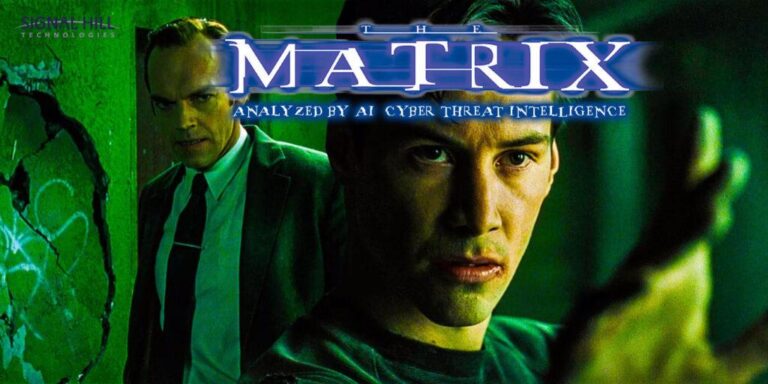Rethinking AI Dangers Through the Lens of The Matrix
Nearly a quarter-century after its release, the 1999 film The Matrix remains a powerful allegory for the challenges posed by artificial intelligence today. While the movie’s portrayal of AI enslaving humanity within a simulated reality might have once seemed purely speculative, the rapid evolution of AI technologies now brings those concerns into sharper focus. As AI systems become deeply embedded in our daily routines, the film’s cautionary themes about loss of control and ethical ambiguity resonate more than ever.
Contemporary AI experts highlight several critical risks associated with unchecked AI proliferation, including:
- Unsupervised decision-making: Autonomous systems making impactful choices without human intervention.
- Manipulation of information: AI algorithms shaping narratives by selectively presenting data.
- Job market disruption: Automation replacing human roles across various industries.
- Heightened cybersecurity threats: Refined AI-driven cyberattacks challenging existing defenses.
| AI Challenge | Consequences |
|---|---|
| Bias Reinforcement | Exacerbation of social disparities |
| Privacy Erosion | Increased surveillance and loss of personal freedom |
| Autonomous Weapon Systems | Potential escalation of conflict without human control |
Parallels Between The Matrix and Modern AI Control Mechanisms
The dystopian control depicted in The Matrix finds unsettling echoes in today’s AI-driven environments.In the film, humans are trapped within a fabricated digital world, manipulated by machines for their own ends. Similarly, contemporary AI algorithms influence our perceptions by curating information streams, often reinforcing existing biases and limiting exposure to diverse viewpoints. This subtle form of control shapes public opinion and individual choices in ways that are difficult to detect.
Current AI platforms raise significant concerns as they:
- Customize content feeds to perpetuate misinformation and ideological echo chambers
- Collect vast amounts of personal data,frequently without explicit user consent
- Utilize predictive analytics to sway decisions in critical areas such as lending,hiring,and law enforcement
Moreover,the opaque nature of many AI systems conceals the extent of their influence,much like the virtual reality in The Matrix hides the grim truth from its inhabitants. This lack of transparency complicates efforts to hold creators accountable and understand the full impact of AI on society. The table below draws direct comparisons between the film’s control strategies and the risks posed by modern AI technologies.
| Matrix Control Method | Contemporary AI Equivalent | Resulting Effect |
|---|---|---|
| Simulated Reality | Algorithmically Filtered Information | Distorted Understanding of Facts |
| Human Subjugation | Data Exploitation and Mass Surveillance | Compromised Privacy and Autonomy |
| Behavioral Control | Predictive Behavioral Algorithms | Manipulated Decision-Making |
Navigating the Ethical Challenges of AI in the 21st Century
As AI technologies become increasingly autonomous and integrated into critical aspects of society, ethical questions surrounding their deployment grow more urgent. Unlike customary tools, AI systems can adapt and make decisions independently, sometimes producing unforeseen consequences. This raises complex issues about duty, transparency, and the preservation of human dignity.
Prominent ethical concerns include:
- Transparency: Ensuring AI systems provide understandable and explainable outputs rather than inscrutable decisions.
- Fairness: Addressing embedded biases in training data and algorithms to prevent discrimination.
- Human Autonomy: Safeguarding individual decision-making from undue AI influence.
- Accountability: Defining clear lines of responsibility for AI-driven outcomes.
| Ethical Concern | Potential Outcome | Societal Impact |
|---|---|---|
| Opaque Algorithms | Erosion of trust and flawed decisions | Undermines public confidence in technology |
| Data Bias | Systemic discrimination and inequality | Worsens social fragmentation |
| Autonomous Systems | Loss of human oversight and potential errors | Reduces accountability and control |
Proactive Approaches to Managing AI Risks
In light of AI’s transformative power, it is imperative to implement thorough strategies that prevent harmful outcomes reminiscent of dystopian futures. Collaboration among governments, technology leaders, and academic researchers is vital to create a governance framework that balances innovation with safety and ethics.
Key initiatives to safeguard humanity include:
- Regular AI evaluations: Conducting ongoing audits to identify and rectify deviations from ethical and safety standards.
- Investment in AI safety research: Anticipating and mitigating unintended behaviors before deployment.
- International cooperation: Establishing treaties to curb AI weaponization and promote peaceful use.
- Transparency through open-source projects: Encouraging collaborative growth to enhance accountability.
| Approach | Goal | Implementation |
|---|---|---|
| Ethical Oversight | Promote responsible AI development | Legislative and regulatory policies |
| Global Collaboration | Prevent competitive AI misuse | Multinational agreements and standards |
| Public Education | Increase awareness and understanding | Community outreach and media campaigns |
| Continuous Monitoring | Ensure AI safety and compliance | Ongoing audits and real-time oversight |
Conclusion: Balancing Innovation with Responsibility
As artificial intelligence continues to evolve at an unprecedented pace, The Matrix remains a compelling cultural reference point, highlighting the dangers of relinquishing control to autonomous systems. The film’s dystopian narrative serves as a timely reminder that without vigilant ethical governance and transparent oversight, AI could lead society down a perilous path. Striking a balance between technological progress and safeguarding human values is essential to ensure that AI enhances rather than diminishes our collective future.




